 |
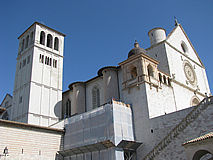 |
 |
 |
One may think that the Catholic champion of connectedness
with nature - St.Francis - had a special connection with the Green Man. Nothing is further
from the truth, though. A striking feature is, that in almost all European franciscan
churches (exception LINK Salzburg) the
latter is conspicuously absent. The reason is simple. From the beginning St.Francis was
the Pope's instrument in combatting "heretical" (poverty) movements, like the
Humiliates and Waldenzers. With regard to the Green Man: he had to replace him rather than
making friendship with him.... |
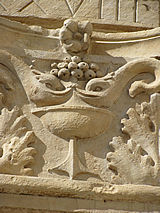 |
 |
 |
 |
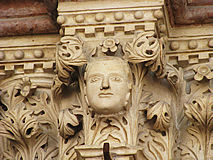 |
Thus upon entering Assisi I had very little expectation to
find Green Men there. Surprise, surprise. The portals of the two churches both contain
masks. After some pondering I found the solution. As headquarters Assisi had simply
"collected" some heads of enemies and displayed them there. Fully comparable to
a village of primitives that triumphantly peak the heads of their killed adversaries on
posts at the entrance of their territory.... |
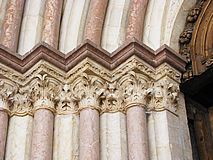
|
 |
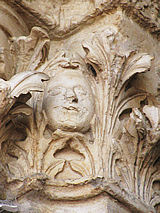 |
 |
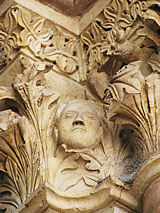 |
These four masks on the two main doors underline my point
of view. The faces have been portrayed as repulsive creatures, ones who deserve to be
humiliated, punished and eventually destroyed... |
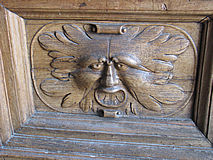
|
 |
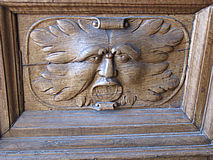 |
 |
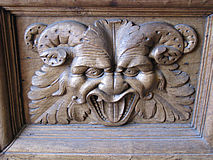 |
|

|
 |
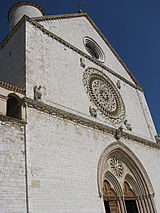 |
 |
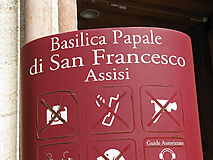 |
The same feature at the portal of the upper church.
Although a certain hidden admiration seems to have played a role, the essential attitude
of this (beautiful) Green Man is submission. The danger of identifying with him is great.
For nothing creates more fear with Catholics but to be accused of "pantheism".
That's why the "title" of Benedict XVI as "Green Pope" is just a
farce. |
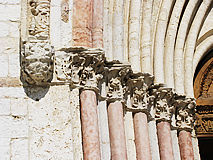 |
 |
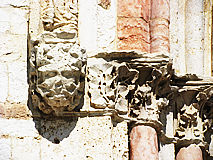 |
 |
 |
 |
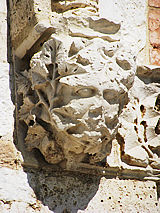 |
 |
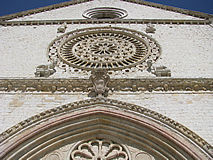 |
 |
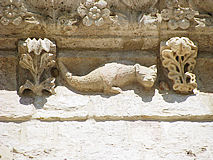 |
On the ridge of the upper portal the real sensation. From
many churches LINK Freiburg, Chartres I know
that the Church loved to portray enemies ("unbelievers", "pagans",
gnostics, "heretics") as vile little monsters. (NB. Just people like you and me,
just because they had a different view!). Here you see some of this "vermin".
For some time people challenged me asking me to prove that these dregs were actually
symbolizing people. |
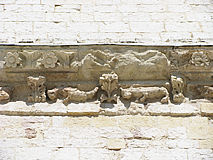 |
 |
 |
 |
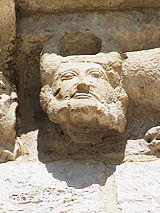 The
Green Man...... |
Well, here is your proof. The two monsters above show their
"true face": haughty human (pagan) faces , "typically" expressing
"no humility for God". Not to submit to God (the Church!) was considered major
sin, hence these people were considered less than animals. The consequences were grave. To
declare dissentient people as "Untermenschen" with value less than animals the
gate was open to persecution and destruction. It would become the pattern of the
Inquisitioin (culminating in the catastrophy of the 20th century...), of which - not
surprisingly - Franciscans were among the most fanatical (and cruel) members*. For all
those who search for the origins of evil: here is your track! * To clear
away a misunderstanding. In school I had a Franciscan teacher who was my best friend. |
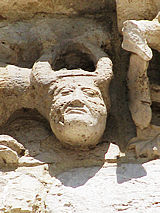 .......you
and me |
|
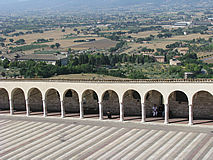 View
from the church |
|
 |
Because St.Francis was so close to nature, especially
Franciscans had to constantly prove that they are not "pantheistic". That
explains their radicalism. Not everybody in Assisi agreed with them, though. |
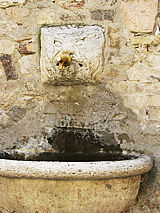 |
|
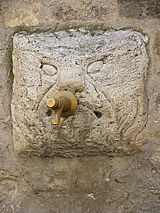 Green
Man as fountain head |
|
 Palm
(Tree of Life) of the Goddess |
The following three carvings (on a house in the main
street) are a delight. It is as if the owner wanted to erase all bad energies coming from
the basilica. Instead of the Green Man as "Untermensch" the real Green Man is
portrayed here in his full glory. Like in the old Hermetic Tradition green is turned into
gold: nothing less than two Green Men who realized God (Sun) Realization. Even on
the spiritual plane they remained loyal to the Source of All Life: the Cosmic Mother,
though, displayed as Universal Mother Shell (below). It is proof of Supreme Cosmic
Insight. Deep gratefulness entered my Being |
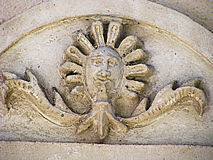
Enlightened Green Man |
|
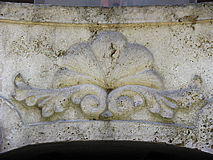 Cosmic
Womb |
|
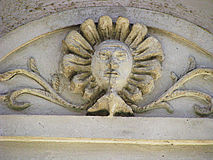 Enlightened
Green Man |
|
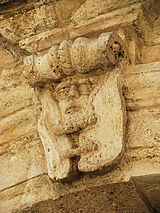 |
|
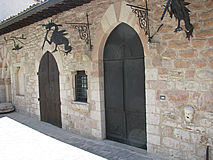 |
|
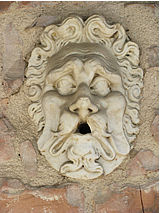 |
At last once again a house owner (restaurant) who openly
expresses his views on life. Three Green Men challenging the dogma's of the Church |
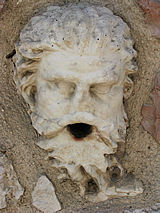 |
|
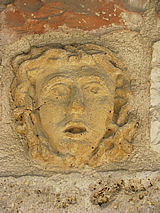 |
|
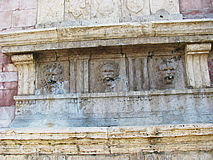 Fountain |
|
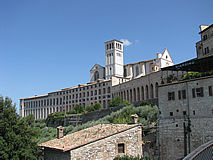 Why
the Church often changed sacred places into fortresses? |